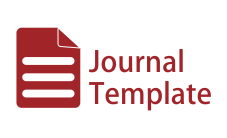The impact of the Islamic finance sector and Covid-19 pandemic on Indonesian economic growth period 2004Q1-2021Q3
DOI:
https://doi.org/10.21580/jiemb.2022.4.1.11859Keywords:
Islamic finance, Covid-19, economic growth.Abstract
The Asian financial crisis in 1997 left the national banking system in disarray and liquidity problems. After that, following the Covid-19 pandemic which has increasingly complicated global economic sectors, such as tourism, trade and finance. In the financial sector, uncertainty has depressed the performance of global financial markets and caused the stock market to decline. A stock market is a place for transactions in financial instruments such as securities or stocks. This study aims to analyze the impact of the Islamic finance sector and the Covid-19 pandemic on the Indonesian economic growth period 2004Q1 – 2021Q3. The
method used in this study is a quantitative method employing Autoregressive Distributed Lag (ARDL) analysis. This study demonstrates that Islamic finance has the potential to boost the economy. This study confirms the assumption that the financial sector affects economic growth (finance led growth). This research can be used as reference material in determining and making policies regarding the development of the Islamic finance sector in Indonesia, such as formulating strategies to encourage economic growth through Islamic finance.
Keywords: Islamic finance; Covid-19; economic growth.
Downloads
References
Afyandhiya, M. H. (2020). Peran Perbankan Syariah Nasional terhadap Pertumbuhan Ekonomi Indonesia Tahun 2014-2018. Jurnal Imiah Mahasiswa FEB Universitas Brawijaya, 8(2). Retrieved from https://jimfeb.ub.ac.id/index.php/jimfeb/article/view/6701
Ansofino, Jolianis, Yolamalinda, & Arfilindo, H. (2016). Buku Ajar Ekonometrika. Yogyakarta: Deepublish.
Bank Indonesia. (2020). Laporan Perekonomian Indonesia 2020. Jakarta.
Baroroh, U. (2012). Analisis Sektor Keuangan terhadap Pertumbuhan Ekonomi Regional di Wilayah Jawa: Pendekatan Model Levine. Etikonomi, 11(2), 180–195. https://doi.org/10.15408/etk.v11i2.1892
Beck, T., & Levine, R. (2004). Stock markets, banks, and growth: Panel evidence. Journal of Banking and Finance, 28(3), 423–442. https://doi.org/10.1016/S0378-4266(02)00408-9
Boediono. (2016). Ekonomi Indonesia dalam Lintas Sejarah. Bandung: PT. Mizan Pustaka.
Dinar, M., & Hasan, M. (2018). Pengantar Ekonomi: Teori dan Aplikasi (1st ed.). Makassar: CV. Nur Lina & Pustaka Taman Ilmu.
Faniyah, I. (2017). Investasi Syariah dalam Pembangunan Ekonomi Indonesia (1st ed.; L. A. Simbolon, Ed.). Yogyakarta: Deepublish.
He, P., Sun, Y., Zhang, Y., & Li, T. (2020). COVID–19’s Impact on Stock Prices Across Different Sectors—An Event Study Based on the Chinese Stock Market. Emerging Markets Finance and Trade, 56(10), 2198–2212. https://doi.org/10.1080/1540496X.2020.1785865
Hidayat, S., & Irwansyah, R. (2020). Pengaruh Dana Pihak Ketiga dan Pembiayaan Perbankan Syariah terhadap Pertumbuhan Ekonomi Indonesia. Jurnal Masharif Al-Syariah: Jurnal Ekonomi Dan Perbankan Syariah, 5(1), 1–21. https://doi.org/10.30651/jms.v5i1.4175
Huda, N. (2017). Ekonomi Pembangunan Islam (2nd ed.). Jakarta: Kencana.
Inggrid. (2006). Sektor Keuangan dan Pertumbuhan Ekonomi di Indonesia: Pendekatan Kausalitas dalam Multivariate Vector Error Correction Model (VECM). Jurnal Manajemen Dan Kewirausahaan, 8(1), 40–50. https://doi.org/10.9744/jmk.8.1.pp.40-50
Ledhem, M. A., & Mekidiche, M. (2020). Economic growth and financial performance of Islamic banks: a CAMELS approach. Islamic Economic Studies, 28(1), 47–62. https://doi.org/10.1108/ies-05-2020-0016
Levine, R. (1997). Financial Development and Economic Growth: Views and Agenda. Journal of Economic Literature, 35(2), 688–726. https://doi.org/10.1596/1813-9450-1678
Mahri, J. W., Cupian, Arif, M. N. R. Al, Arundina, T., Widiastuti, T., Mubarok, F., … Nurasyiah, A. (2021). Ekonomi Pembangunan Islam (1st ed.; M. Irfan, A. Sakti, S. E. Hidayat, & M. S. Nurzaman, Eds.). Jakarta: Departemen Ekonomi dan Keuangan Syariah- Bank Indonesia.
Marimin, A., Romdhoni, A. H., & Fitria, T. N. (2015). Perkembangan Bank Syariah Di Indonesia. Jurnal Ilmiah Ekonomi Islam, 1(02), 75–87. https://doi.org/10.29040/jiei.v1i02.30
Otoritas Jasa Keuangan. (2021). Strategi Nasional Literasi Keuangan Indonesia 2021-2025. 1–130.
Patrick, H. T. (1966). Financial Development and Economic Growth in Underdeveloped Countries. Economic Development and Cultural Change, 14(2), 174–189. Retrieved from https://www.jstor.org/stable/1152568
Prastowo. (2018). Pengaruh Pembiayaan Perbankan Syariah terhadap Pertumbuhan Ekonomi: Studi Empiris di 13 Negara. Hayula: Indonesian Journal of Multidisciplinary Islamic Studies, 2(1), 65–80. https://doi.org/10.21009/hayula.002.1.05
Rafsanjani, H., & Sukmana, R. (2014). Pengaruh Perbankan atas Pertumbuhan Ekonomi : Studi Kasus Bank Konvensional dan Bank Syariah di Indonesia. JAM: Jurnal Aplikasi Manajemen, 12(3), 492–502. Retrieved from https://jurnaljam.ub.ac.id/index.php/jam/article/view/694
Rahma, N. A., & Mayasari, I. (2021). Pengaruh Total Aset , Profitabilitas , dan Likuiditas Terhadap Efisiensi Bank Umum Syariah Di Indonesia dengan Pendekatan Stochastic Frontier Analysis. Prosiding 12th Industrial Research Workshop and National Seminar (IRWNS), 12, 1562–1567. Retrieved from https://jurnal.polban.ac.id/proceeding/article/view/2985
Ramadhani, A. (2021). Pengaruh COVID-19 Terhadap Indeks Saham Indonesia di Berbagai Sektor Industri (Universitas Islam Indonesia Yogyakarta). Universitas Islam Indonesia Yogyakarta. Retrieved from https://dspace.uii.ac.id/bitstream/handle/123456789/31705/17313053 Almadita Ramadhani.pdf?sequence=1
Siahaan, S. R., Purba, E. F., & Simangunsong, R. M. (2001). Pengantar Ekonomi Pembangunan. Universitas HKBP Nommensen.
Todaro, M. P., & Smith, S. C. (2011). Pembangunan Ekonomi (11th ed.). Jakarta: Erlangga.
Widarjono, A. (2018). Ekonometrika: Pengantar dan Aplikasinya Disertai Panduan EViews (5th ed.). Yogyakarta: UPP STIM YKPN.
Zumaidah, L. N., & Soelistyo, A. (2018). Pengaruh Total Aset, Dana Pihak Ketiga, dan Kredit pada Bank Umum terhadap Pertumbuhan Ekonomi Provinsi-Provinsi di Indonesia pada Tahun 2013-2016. Jurnal Ilmu Ekonomi, 2(2), 251–263. Retrieved from https://ejournal.umm.ac.id/index.php/jie/article/view/7028
Downloads
Additional Files
Published
Issue
Section
License
Authors who publish with this journal agree to the following terms:
Authors retain copyright and grant the journal right of first publication with the work simultaneously licensed under a Creative Commons Attribution-ShareAlike 4.0 International License that allows others to share the work with an acknowledgement of the work's authorship and initial publication in this journal.
Authors are able to enter into separate, additional contractual arrangements for the non-exclusive distribution of the journal's published version of the work (e.g., post it to an institutional repository or publish it in a book), with an acknowledgement of its initial publication in this journal.
Authors are permitted and encouraged to post their work online (e.g., in institutional repositories or on their website) prior to and during the submission process, as it can lead to productive exchanges, as well as earlier and greater citation of published work (See The Effect of Open Access).


